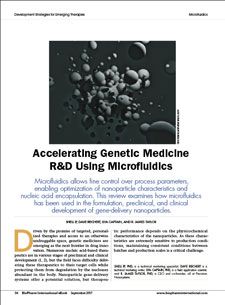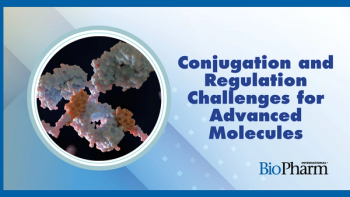
- BioPharm International-09-15-2017
- Volume 2017 eBook
- Issue 2
Accelerating Genetic Medicine R&D Using Microfluidics
This review examines how microfluidics has been used in the formulation, preclinical, and clinical development of gene-delivery nanoparticles.
Microfluidics is fast becoming an essential tool for encapsulating nucleic acids. Microfluidics allows fine control over process parameters, enabling optimization of nanoparticle characteristics and nucleic acid encapsulation. The continuous, inherently scalable nature of the microfluidic process allows formulations to be optimized at low volumes, before being scaled-up using multiple microfluidic mixers in parallel. This review examines how microfluidics has been used in the formulation, preclinical, and clinical development of gene-delivery nanoparticles.
Download the
.
Article Details
BioPharm International eBook: Development Strategies for Emerging Therapies
Vol. 30
September 2017
Pages: 36-39
Citation
When referring to this article, please cite it as S. Ip, D. Reichert, I. Captain, and R. J. Taylor, "Accelerating Genetic Medicine R&D Using Microfluidics," BioPharm International Development Strategies for Emerging Therapies eBook (September 2017).
Articles in this issue
over 8 years ago
Patenting Prospects for Cell-Based Therapiesover 8 years ago
Harvest of Human Mesenchymal Stem Cells from Microcarriersover 8 years ago
End-to-End Cell Therapy Automation: An Immunotherapy Case Studyover 8 years ago
Optimizing a Unique Cancer Vaccine for Intradermal Deliveryover 8 years ago
Overcoming Hurdles in Emerging Therapy DevelopmentNewsletter
Stay at the forefront of biopharmaceutical innovation—subscribe to BioPharm International for expert insights on drug development, manufacturing, compliance, and more.





